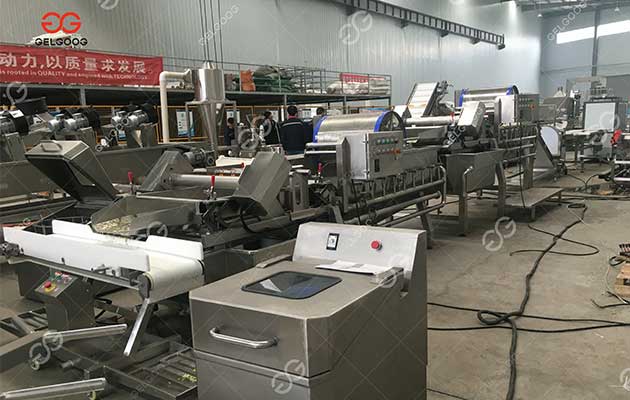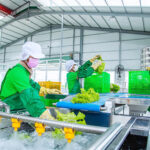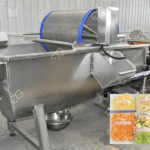Lettuce, a popular leafy green vegetable, graces our plates in salads, sandwiches, and wraps. But have you ever wondered how it reaches our tables? The journey of lettuce from the farm to our forks involves several processing methods in a factory setting. In this blog, we will delve into the fascinating world of lettuce processing, breaking down each step in an easy-to-understand manner.
Processing lettuce requires a salad processing line, which can wash, sort, cut, dry, package and process the vegetables into salads that can be sold directly.
1. Harvesting: The journey of lettuce processing begins on the farms, where skilled farmers determine the optimal time for harvest. Lettuce is usually harvested when it reaches its peak size and flavor. Workers carefully cut the lettuce heads or leaves to minimize damage.
2. Washing and Cleaning: After harvest, the lettuce heads are transported to the processing facility. The first step involves thorough washing and cleaning. This is essential to remove dirt, debris, and any traces of pesticides. The lettuce is usually submerged in water and subjected to gentle agitation to ensure proper cleaning.
3. Sorting and Grading: During sorting and grading, the lettuce is examined for quality. Any damaged or bruised leaves are removed, leaving behind only the freshest and healthiest ones. The lettuce is also sorted based on size and color, ensuring uniformity in the final product.
4. Cutting and Chopping: Depending on the intended use, the lettuce heads are either kept whole or cut into smaller pieces. For bagged salads or pre-packaged lettuce, the leaves might be chopped into convenient bite-sized pieces. This step requires precision to maintain the desired texture and appearance.
5. Drying: After cutting, the lettuce goes through a drying process. Excess moisture can lead to spoilage, so it’s crucial to remove as much water as possible. Centrifuges or air-drying methods are commonly used for this purpose.
6. Packaging: Packaging is a critical step to preserve the freshness of the lettuce. The processed lettuce is packed in various ways, such as plastic bags, clamshell containers, or bulk crates. Packaging can also include modified atmosphere packaging, where the air composition is adjusted to extend the shelf life.
7. Cooling: Lettuce is a perishable item, and maintaining a proper temperature is essential to prevent spoilage. The lettuce is rapidly cooled to a temperature that slows down the growth of bacteria and enzymes, helping it stay crisp and fresh for longer periods.
8. Quality Control: Throughout the entire processing journey, quality control checks are performed. This involves inspecting the lettuce for any defects, ensuring proper packaging, and confirming that it meets food safety standards. Any issues are addressed promptly to maintain the highest quality product.
9. Distribution: Once the lettuce has passed all quality checks, it’s ready for distribution. It’s transported to grocery stores, restaurants, and other points of sale, where consumers can purchase and enjoy the fresh produce.
Conclusion: The journey of lettuce from the farm to our tables involves a series of carefully orchestrated processing methods in a factory setting. From harvesting to distribution, each step plays a crucial role in ensuring that we receive fresh, clean, and high-quality lettuce. The dedication of farmers, factory workers, and quality control teams ensures that we can enjoy this versatile leafy green in various culinary delights. So the next time you bite into a crisp salad, you can appreciate the intricate processes that brought that lettuce to your plate.



